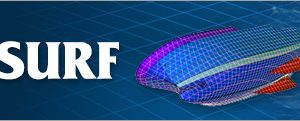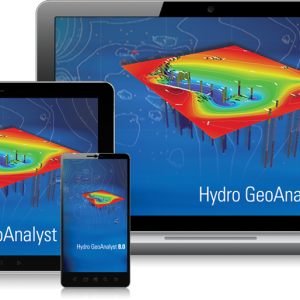GeoStudio 2025.1 by Seequent / formerly GEO‑SLOPE International Ltd.
$ 150.00
GeoStudio – Advanced Geotechnical and Geoslope Analysis Software
GeoStudio by GEO‑SLOPE is the leading geotechnical engineering software suite for slope stability, seepage, stress-deformation, and thermal analysis. Trusted by engineers worldwide, it combines powerful modeling capabilities with intuitive design, helping professionals simulate, analyze, and optimize soil and rock behavior for safe and efficient projects. Perfect for civil, geotechnical, and environmental engineers seeking reliable, state-of-the-art geoslope analysis tools…
Description
Product Overview
GeoStudio 2025.1 is the latest release in the powerful GeoStudio geotechnical engineering suite — a world‑class software environment for geotechnical, geo‑environmental, civil and mining engineers engaged in slope stability, seepage/groundwater flow, heat and mass transfer, as well as stress–strain and coupled physics soil/rock analysis. This release brings major advances in modeling capability, automation, performance and usability. It is designed for professionals seeking to simulate, analyse and verify ground‑behaviour in complex real‑world conditions with confidence, speed and precision.
What’s New & Key Highlights
This version delivers an impressive array of enhancements and new functions across multiple modules:
• Python Scripting API
A major new capability: GeoStudio 2025.1 introduces a Python scripting interface that allows users to automate repetitive workflows (for example updating a piezometric surface from sensor data, interfacing with calibration/inverse‑modelling tools, extracting custom results or generating graphs).
This means you can integrate GeoStudio into larger data‑pipelines, perform batch analyses or produce custom reporting beyond the built‑in UI.
• 3D Reinforcement & Array Tools
-
Full 3‑D reinforcement analysis: Users can now include anchors, soil‑nails, rock‑bolts and other reinforcement within 3D limit equilibrium models and assess their effect on the factor of safety.
-
New Array Tool in 3D: You can define point‑ and line‑arrays within 3D geometries (useful for piles, nails, dewatering wells, artificial ground‑freeze lines) to streamline construction of complex geometries.
• Automatic Slip Surface Search & Enhanced Optimisation
Significant improvements have been made to the automatic search algorithm and optimization of critical slip surfaces:
-
Non‑circular failure surfaces now supported (important in anisotropic geology).
-
Multiple advanced search & optimisation algorithms added: Particle Swarm Optimization, Differential Evolution, Genetic Algorithm, Random Walk, Downhill Skiing, etc., for both 2D and 3D analyses.
-
In 2D, the slip surface optimisation now supports polylines and splines, giving greater flexibility in shape definition.
• Reinforcement Pull‑Out Capacity – Improved Accuracy
The calculation method for reinforcement pull‑out capacity has been enhanced: rather than using just the effective stress at the slip‑surface intersection, GeoStudio now integrates the bonded length of the reinforcement and accounts for increasing confinement stress with depth and dipping reinforcement arrangements. This leads to more accurate, reliable results.
• Heat‑Transfer & Thermal Modelling Enhancements
-
Visualization of Péclet and Courant numbers in both 2D & 3D heat transfer models assists with mesh stability checks and time‑step selection in advective systems.
-
Thermal dispersion coefficient added, enabling modelling of hydrodynamic mixing effects in heat transfer problems (important for groundwater scenarios).
-
New thermal‑conductivity estimation routines based on established methods (de Vries 1963, Johansen 1975, Côté & Konrad 2005, Lu et al. 2007) enhance accuracy for porous media.
• Graphing & Results Display – Enhanced
The new version includes a significantly upgraded graphing technology: richer customization, better display of results, and improved interpretative capability — helping engineers visualise and present their analyses more clearly.
• Performance Improvements & Mesh Refinement
-
Finite‑Element solver routines optimised — solve times for stress–strain analyses reported up to around 20% faster.
-
Improved mesh refinement in 3D: better handling of small features (thermosyphons, de‑watering wells, freeze‑pipes, sand‑point wells), smoother transitions between mesh sizes and more robust boundary‑condition application.
-
Better 2D‑sketching support for building 3D geometry, including editing of local origin coordinates — improves modelling speed and accuracy.
System Requirements
To take full advantage of GeoStudio 2025.1 you’ll want a modern workstation. While modest models may run simpler 2D jobs, for large 3D models or coupled physics the following is advised:
Minimum Requirements (for standard 2D work)
-
Operating System: Windows 10 (64‑bit) or Windows 11.
-
Multi‑core Intel/AMD processor (Pentium/ Athlon equivalent minimum) — but multi‑core strongly recommended.
-
4 GB RAM minimum (but realistically 16 GB is more practical).
-
At least 64 GB free disk space (preferably SSD for faster I/O).
-
Graphics: DirectX 10+ support, 2 GB VRAM minimum (for basic 3D interaction).
Recommended Requirements (for complex 3D / coupled analyses)
-
Windows 10 x64 or Windows 11.
-
High‑performance multi‑core CPU (Intel i7 or AMD Ryzen equivalent) to efficiently handle large models.
-
16 GB or more RAM (32 GB or more for very large 3D meshes).
-
SSD with large capacity (e.g., 500 GB or more) to improve load/solve times.
-
Graphics card with 4 GB+ VRAM (e.g., NVIDIA GTX/RTX or AMD Radeon equivalent) for smooth 3D modelling and result visualisation.
Bug Fixes & Stability Improvements
GeoStudio 2025.1 includes numerous quality‑enhancements and fixes (detailed in the official release notes) which improve robustness, reliability and user experience. Key fixes include:
-
Corrected display issues of material names in dropdowns for weak‑surface assignments.
-
Resolved inconsistencies in probabilistic reporting between SLOPE/W and SLOPE3D.
-
Addressed solver‑crash cases when switching between 2D/3D view‑preferences.
-
Fixed DXF/DWG export problems when importing 2D models into 3D sections.
-
Enhanced mesh‑handling, especially for legacy files with overlapping geometry points, improving success rates for imported models.
Interesting Facts & Why This Version Matters
-
This release represents a key milestone where automation (via scripting) meets advanced geotechnical modelling — providing engineers with the means to embed GeoStudio into larger automated workflows (sensor data, calibration, batch runs).
-
The expansion of 3D reinforcement and array tools addresses growing industry demand for realistic modelling of complex ground conditions (mining slopes, deep excavations, ground freezing, dewatering) — meaning you can now model features more faithfully in three dimensions.
-
The enhancement of non‑circular and advanced optimisation algorithms for slip‑surface search acknowledges the increasing complexity of modern geotechnical problems (e.g., anisotropy, irregular geometry) and gives you tools to find the most critical failure modes rather than rely on legacy circular assumptions.
-
With solver performance improvements and improved mesh refinement, the practical turnaround time for large 3D coupled analyses is becoming more manageable. This means more geotechnical professionals can apply high‑fidelity models without being limited by compute time.
-
The upgrade of graphing and results‑visualisation tools reflects a trend in engineering software toward not just solving problems but communicating them — enabling clearer reports and better stakeholder communication.
Why Choose GeoStudio 2025.1?
If you are working in any of the following domains: slope stability, groundwater/ seepage, heat and mass transfer in soils/rocks, reinforcement design, mining, civil groundworks — then GeoStudio 2025.1 offers:
-
A fully integrated suite of tools covering 2D & 3D, coupled physics (flow, heat, stress), limit‑equilibrium and finite‑element methods.
-
New modelling fidelity (3D reinforcement, arrays, non‑circular slip surfaces, advanced optimisation) suited to modern geotechnical challenges.
-
Productivity‑enhancing automation (Python scripting) which can reduce manual effort and bring repeatability and integration into your workflows.
-
A mature, industry‑trusted platform with strong vendor support (Seequent/Bentley) and a broad user‑community.
-
Robust performance, improved meshing & solver speed — allowing you to tackle more complex models in less time.
-
Enhanced visualisation & reporting capabilities which help you interpret results more clearly and present persuasive analyses to stakeholders.
In short: GeoStudio 2025.1 is the most advanced release yet in the GeoStudio line, bringing together advanced physics, automation and performance improvements to give you greater confidence, efficiency and capability in your geotechnical modelling.
Summary
GeoStudio 2025.1 represents a major upgrade for geotechnical and geo‑environmental engineering professionals. Whether you’re modelling 3‑D slopes with reinforcement, automating batch workflows, refining large meshes, or generating advanced graphics for reporting — this release delivers the tools you need to stay ahead. With its combination of new features, improved performance and reliable bug fixes, GeoStudio 2025.1 is ideal for engineers who demand high fidelity, productivity and reliability in their ground‑analysis work.
⭐️⭐️⭐️⭐️⭐️
“As a geotechnical engineer and developer who works extensively with slope stability and groundwater modelling, I can confidently say that GeoStudio 2025.1 is an indispensable tool in my workflow. The new Python scripting API has transformed how I automate repetitive analyses and extract custom results, saving me countless hours. The 3D reinforcement modeling, improved slip-surface optimisation, and advanced mesh refinement deliver highly accurate simulations for complex geological conditions. Performance improvements and enhanced visualization make interpreting results faster and more reliable than ever.
GeoStudio 2025.1 is a complete solution for geotechnical engineering, slope stability analysis, and soil/rock modeling, combining precision, efficiency, and user-friendly design. I highly recommend it for civil, mining, and environmental engineers who need robust and state-of-the-art geotechnical software.”












